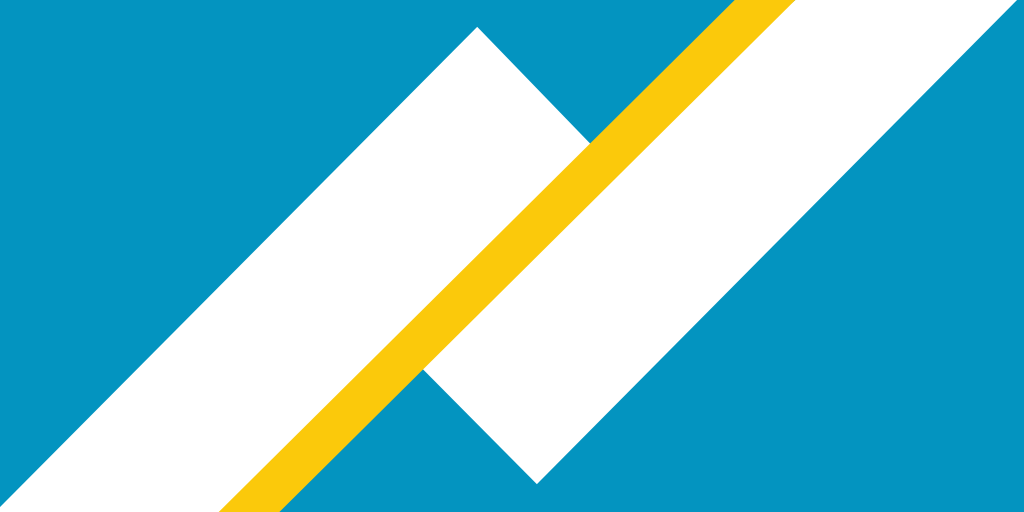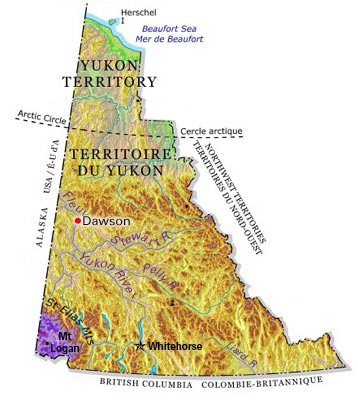Almost 10,000 of all the prospectors who arrived in Yukon between 1897 and 1899 were French Canadians. They came from many villages in Quebec, and sometimes even from Acadia and the Prairies. The expansion of federal services and the multiplication of the linguistic obligations of the federal state after the adoption of the Official Languages Act (1969) encouraged French Canadians to settle in Whitehorse. The latter banded together in 1979 and founded the Association franco-yukonnaise (AFY) in 1982. Between 1980 and 2000, several associations and institutions were formed, namely the school École Émilie-Tremblay. The scenery and the culture in Yukon appealed to the francophones. According to the 2021 census, 5,745 people in Yukon (14.4% of the population) speaks French.
History
In 1786, fur trader Laurent Leroux established trading posts on the Great Slave Lake for Gregory, MacLeod and Company, which merged with the competing North West Company the following year. Several decades later in 1840, explorer Robert Campbell, accompanied by French Canadian guides, was sent by rival corporation Hudson’s Bay Company (HBC) to establish business relations in present-day Yukon. In 1874, voyager François-Xavier Mercier attempted to break the monopoly held by the HBC by founding the Fort Reliance trading post downstream from Klondike River. Mercier also convinced the Oblates of Mary Immaculate to send the first missionaries to Yukon.
The first Yukon gold deposits were discovered in the 1860s. At the end of the 19th century, francophones formed the majority at the Dawson City and Mayo posts. The discovery of large gold nuggets in 1897 led to the 1898 gold rush, during which 100,000 prospectors tried their luck (see also Klondike Gold Rush). The federal government founded the Yukon Territory the same year, recognizing the need to establish local administration. Almost 10,000 of the prospectors who arrived in Yukon between 1897 and 1899 were French Canadians from Quebec, Acadia and the Prairies. These were mainly men, but some women, including Émilie Tremblay, also contributed in building the boom towns.
20th Century
Little information has been gathered on the French Canadians who were present in Yukon during the first half of the 20th century. French Canadians settled in Whitehorse for several reasons: the reestablishment of the territorial capital from Dawson to Whitehorse, the expansion of federal services and the multiplication of the linguistic obligations of the federal state after the adoption of the Official Languages Act (1969). They banded together in 1979 and founded the Association franco-yukonnaise (AFY) in 1982, supported by subsidies from the federal Department of Secretary of State. The AFY organized networking activities and cultural events and it launched the biweekly newspaper L’Aurore boréale in 1983 in the hopes of creating and maintaining a collective awareness. In 1985, the AFY debuted its own daily radio show on CBC Yukon and a full program on Radio-Canada’s French language channel in 1991.

The Franco-Yukonnais Flag
The francophones in Yukon adopted a flag in 1986 (see also Franco-Ontarian Flag). It consists of a blue background reflecting French culture; three diagonal stripes standing for Yukon’s mountains; two white stripes representing the winters; and a yellow stripe symbolizing the gold rush, the starting point of the Franco-Yukonnais community and the path it laid in the territory.
While a “Franco-Yukonnais” identity emerged and defined the community, the Quebec and francophone roots ran deeper. Common history was built and preserved through recollections about the French-Canadian prospectors who came to Klondike at the end of the previous century. This served in engaging the francophones to support the political demands of activists. When Daniel Saint-Jean disputed an English-only fine given by an officer of the Royal Canadian Mounted Police in 1984, the AFY urged the Federal State to fulfil its linguistic obligations in the North West. In 1988, Ottawa signed the first agreement between Canada and Yukon, and the latter then adopted the Languages Act and inaugurated the French Language Services Office.
Educational Establishments
In 1984, the AFY succeeded in securing only two French language classes to be taught from grade 1 to 6. They were available for approximately thirty students in Whitehorse. However, Yukon was home to at least 215 “right-holder” children, hence the importance of expanding educational services in French. In the Mahe report released in 1990, the Supreme Court of Canada compelled provinces and territories to establish school authorities and to allocate independent buildings wherever justified by the number of children. Thus, in 1992, the school École Émilie-Tremblay became the dedicated building for French language classes. The Manitoba Reference regarding Public Schools Act (1993) granted francophones the right to their own management systems. As a result, the Commission scolaire francophone du Yukon (CSFY) was created in 1996.
In the meantime, several francophone associations were established and devoted to women’s representation (1995), youth programs (1995), adult education (1996), French immigrant gatherings (2002) and integration programs for francophone newcomers (2005).
Admissions Criteria
In 2009, the Yukon government notified the CSFY that it wished to control the eligibility of new students. The goal of the CSFY was to recruit students from families with no acquired right to a French-language education. (See Section 23 and Francophone Education outside of Quebec).
Following years of court litigation and a Supreme Court of Canada ruling in 2015, the Yukon government and the CSFY finally came to an agreement in 2016. The CSFY would be able to manage its own admissions, including children from immigrant families and those whose ancestors spoke French as their mother tongue. The CSFY consented to keep the government informed on the evolution of its admission and enrolment criteria.
In 2017–18, the CSFY had three French language schools where 297 students were enrolled from kindergarten to grade 12.
Population
The scenery and the culture in Yukon drew the francophone population. The number of people in Yukon capable of speaking French grew from 2,595 to 5,745 strong (i.e. from 9.4% to 14.4%) between 1991 and 2021. The importance given to French language also rose among Anglophones: from 2004 to 2018, enrolment in French immersion programs doubled to 765 students. In terms of bilingualism rates, 14.2% of the population speaks both English and French in 2021. The province now places third, after Quebec (46.4%) and New-Brunswick (34%).
The francophone population, o lives mostly in urban areas, with 77% residing in Whitehorse.
Francophone Day in Yukon
In 2007, 15 May was designated Francophone Day in Yukon and each year it is celebrated with festivities.

 Share on Facebook
Share on Facebook Share on X
Share on X Share by Email
Share by Email Share on Google Classroom
Share on Google Classroom








